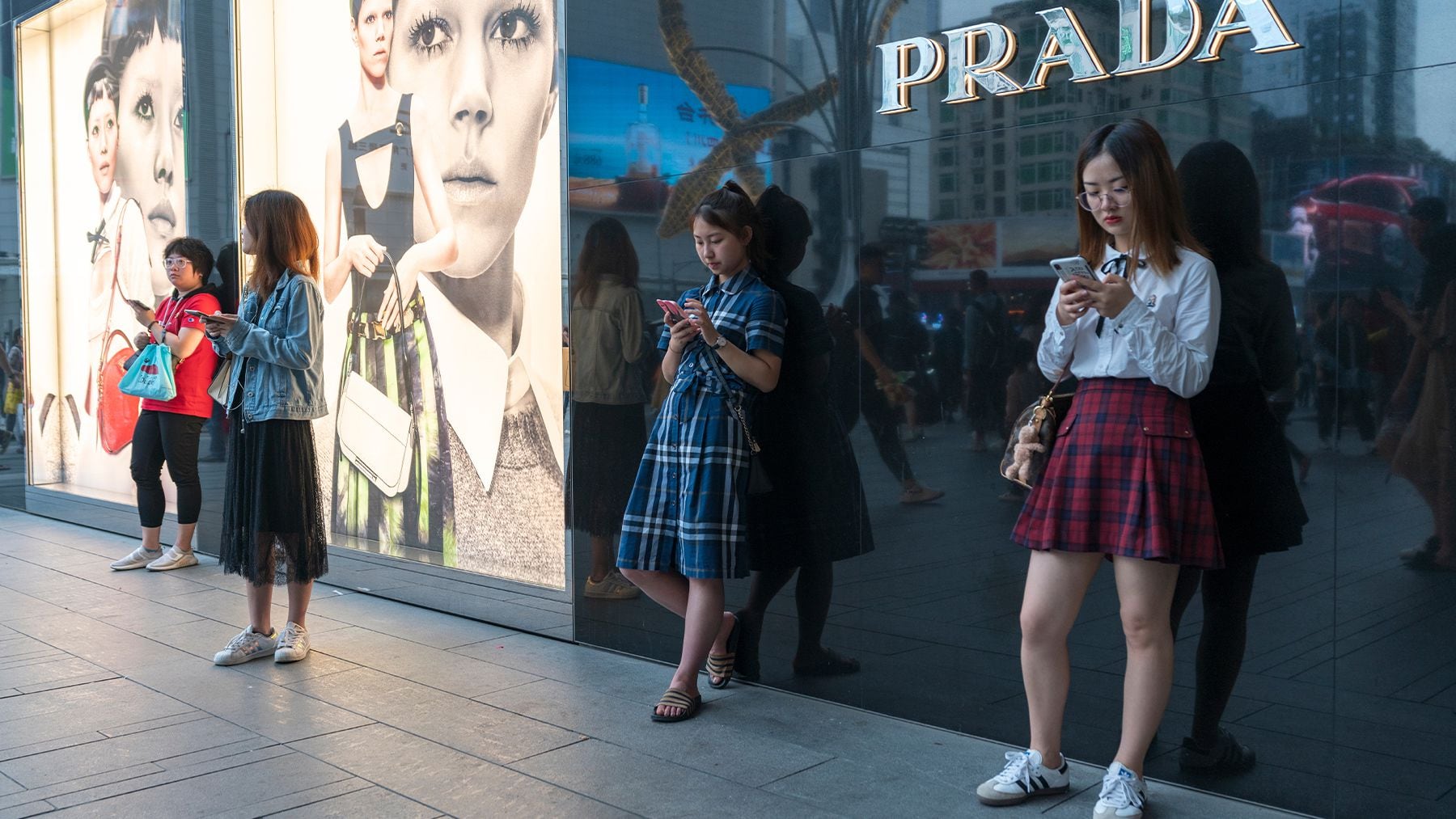
Fresh from their tumble last week, European luxury stocks have suffered another fashion faux pas.
The concerns that sent shares lower on Wednesday center on the risk that that the C-shaped recovery — the wave of demand from China since its post-pandemic reopening — is starting to deflate. This would arguably be even more serious than the slowdown in the US luxury market that unnerved investors last week.
The thesis goes like this: While China was reeling from rolling Covid outbreaks and lockdowns over the past couple of years, the US consumer stepped up to bat with the bling business. Flush with stimulus checks, crypto and stock market gains, they splurged on Rolex watches (if they could find them), Gucci sneakers and Louis Vuitton handbags. Now the US market is slowing, with younger, affluent shoppers hitting the brakes harder than the uber wealthy.
For the luxury industry to maintain the surprisingly strong growth it has enjoyed over the past three years, China needs to pick up the slack. The bling baton must move on from the US.
So far, so good. As China reopened, the European luxury goods groups, including LVMH Moet Hennessy Louis Vuitton SE, Kering SA, Hermes International, and Cie Financiere Richemont SA all saw customers come through their doors to buy Dior book bags and Cartier Love bangles.
LVMH for example, said its crucial fashion and leather goods sales in China rose by a percentage into the double-digits in the first quarter. Gucci-owner Kering said its sales to Chinese consumers rose by a similar magnitude across all of its brands.
But there have been some notes of caution creeping in. Johann Rupert, chairman of Cartier-owner Richemont, said Chinese consumers, although spending in their home cities, as well as in Hainan, Macau, Hong Kong and Singapore, remained nervous. While the market was recovering, it was “cautious growth.”
Now recent economic data out of China looks shaky. Manufacturing activity contracted at a worse pace than April, while services expansion eased, official data showed. Meanwhile, Chang Shu, Chief Asia Economist for Bloomberg Economics, said a double-digit rise in retail sales in April was driven largely by easy comparatives last year, as Shanghai’s lockdown hurt spending in April 2022. There was a clear loss of momentum — the month-on-month rise was half that in March, and well below the pre-pandemic average, she said. The property sector has also turned down again.
There may still be some pent-up demand, particularly among the most wealthy consumers, who are a significant driver of spending on top-end goods. President Xi Jingping’s agenda to increase “common prosperity” in the country seems to have fallen by the wayside.
But even these shoppers could be affected by another potential peril: an emerging Covid wave. The Chinese government may be reluctant to reintroduce restrictions, but investors certainly have memories of last year, when lockdowns hit sales.
European luxury stocks have become a key way to play China’s reopening. That explains why the MSCI Europe Apparel, Textiles & Luxury Goods Index rose 26 percent between the start of the year and May 19. Hermes is up almost 40 percent over this period.
With luxury’s premium to the broader European market at its highest for almost a decade, there is little room for disappointment.
Even after the gains this year, LVMH, Hermès and Richemont are probably the most defensive. They have the scale to invest, and their brands are at the forefront of consumers’ minds.
Those trying to turn around their fortunes, such as Kering, which derives about half of its sales and two-thirds of its operating profit from Gucci, look more vulnerable. Britain’s Burberry Group Plc is exposed to both the Chinese consumer, currently accounting for about 30 percent of sales, and the affluent US shopper. But it has a new star designer, Daniel Lee, who may be able to catapult it into the top luxury echelons.
Given the initial rebound after China’s reopening, high-end sales from the country in the second quarter are still likely to be strong. But any sign of this fizzling, particularly amid expectations of a wave of Chinese outbound tourism later this year and into 2024, and the C-shape recovery could be consigned to last season’s styles.
By Andrea Felsted
Stay connected with us on social media platform for instant update click here to join our Twitter, & Facebook
We are now on Telegram. Click here to join our channel (@TechiUpdate) and stay updated with the latest Technology headlines.
For all the latest Fashion News Click Here

:quality(70):focal(1354x270:1364x280)/cloudfront-eu-central-1.images.arcpublishing.com/businessoffashion/JMKAZZU4JNC5HLEKPKTAW3V5FE.jpg)